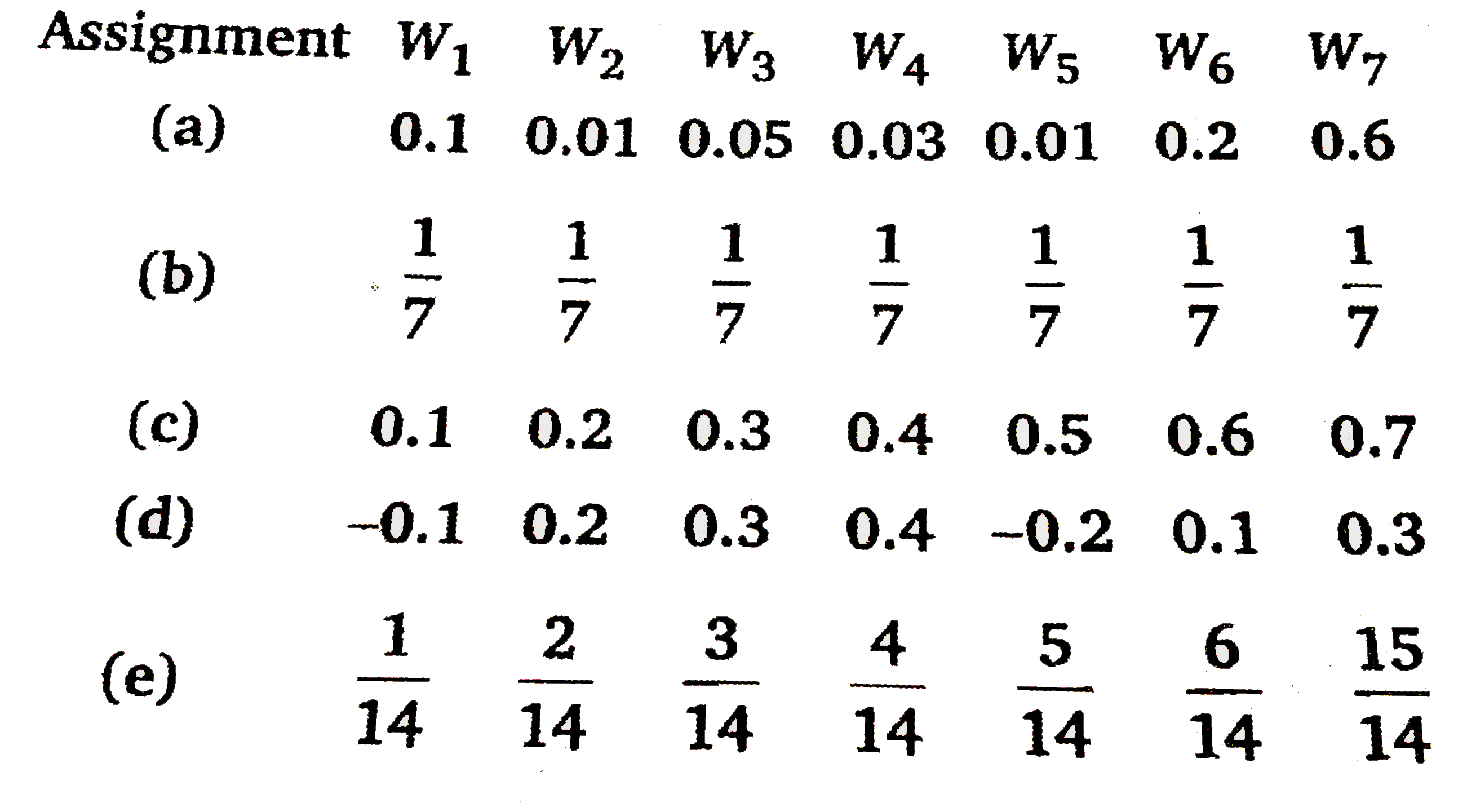Let A and B be any two events such that P(A) = 12 and P(B) = 13. Then find the value of P(A'∩B')'+P(A'∪B')'. Solution in Bengali
P(A)=12,P(B)=13
P(A'∪B')'=P(A∩B)
and P(A'∩B')=P(A∪B)
P(A'∩B')'+P(A'∪B')'
=P(A∪B)+P(A∩B)
=P(A)+P(B)
=12+13=56
Topper's Solved these Questions
- BOOK - CENGAGE PUBLICATIONCHAPTER - PROBABILITY I EXERCISE - Solved Example9videos
PROBABILITY I
- BOOK - CENGAGE PUBLICATIONCHAPTER - PROBABILITY I EXERCISE - Exercise 9.16videos
PROBABILITY I
- BOOK - CENGAGE PUBLICATIONCHAPTER - PROBABILITYEXERCISE - All Questions470videos
PROBABILITY
- BOOK - CENGAGE PUBLICATIONCHAPTER - PROBABILITY IIEXERCISE - MULTIPLE CORRECT ANSWER TYPE6videos
PROBABILITY II
Similar Questions
When a fair dice is rolled, the number that comes up top is a number between one to six. Assuming we roll the dice once, to check the possibility of three coming up.
06:32View SolutionWhich of the following cannot be valid assignment of probabilities for outcomes of sample space S={W1,W2,W3,W4,W5,W6,W7}
 02:53View Solution
02:53View SolutionA coin is tossed three times, consider the following events. A : ‘No head appears’, B: ‘Exactly one head appears’ and C: ‘Atleast two appear’. Do they form a set of mutually exclusive and exhaustive events?
01:50View SolutionLet EandF be two independent events. The probability that exactly one of them occurs is 1125 and the probability if none of them occurring is 225. If P(T) denotes the probability of occurrence of the event T, then (a) P(E)=45,P(F)=35 (b) P(E)=15,P(F)=25 (c) P(E)=25,P(F)=15 (d) P(E)=35,P(F)=45
02:19View SolutionLet A and B be any two events such that P(A) = 12 and P(B) = 13. Then find the value of P(A'∩B')'+P(A'∪B')'.
00:59View SolutionLet a and B be the events such that
P(A)=310,P(B)=12 and P(B/A)=25.
Find (i) P(A∩B) (ii) P(A∪B) (iii) P(A/B).01:06View SolutionIf A and B are two events and P(A)=38 . P(B)=12,P(A∩B)=14 then P(A∪B) =
01:23View Solutionयदि A और B कोई दो घटनाएँ हो, तब P(A∪B)−P(A∩B)=P(A)+P(B).
03:08View SolutionLet A and B be the two events such that P(A)=12,P(B)=13andP(A∩B)=14 , find
P(AB)05:27View SolutionLet A and B be the two events such that P(A)=12,P(B)=13andP(A∩B)=14 , find
P(BA)View SolutionLet A and B be the two events such that P(A)=12,P(B)=13andP(A∩B)=14 , find
P(A∪B)04:46View SolutionLet A and B be the two events such that p(A)=12,P(B)=13andP(A∩B)=14 , find
P(¯¯¯A¯¯¯B)01:53View SolutionLet P(E) denote the probability of occurrence of event E. If A and B are two events associated with an experiment such that ∣∣ ∣ ∣∣P(A)−1P(B)−P(A∩B)P(B)−P(A∩B)P(A)−1−P(A∩B)P(A)−1P(B)∣∣ ∣ ∣∣=0 then
(A) P(A∪B)=1
(B) P(AB)=P(A)+P(B)−1P(B)
(C) if A⊂B then P(B)=P(A∪B)
(D) if A⊂B then P(A)=103:11View SolutionIf A and B are two events such that P(A∪B)=3/4,P(A∩B)=1/4,P(A')=2/3 , then P(A'∪B) is
02:30View SolutionLet A and B be any two events such that P(A) = 12 and P(B) = 13. Then find the value of P(A'∩B')'+P(A'∪B')'.
02:49View SolutionIf A and B are two events and P(A) = (3)/(8) . P(B) =(1)/(2), P(A nn B) = (1)/(4) then P(A uu B) =
02:19View Solution

